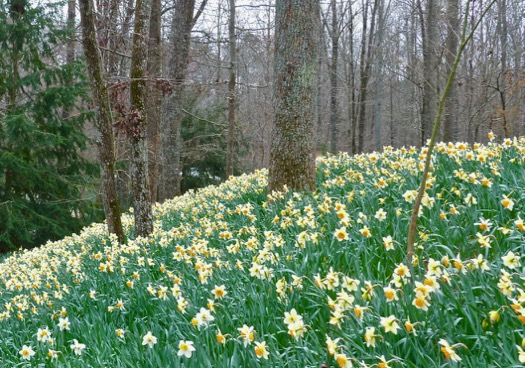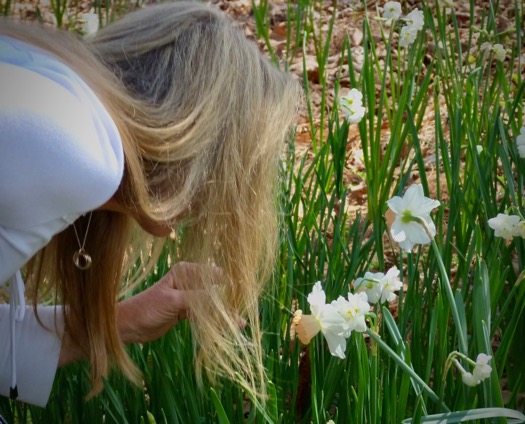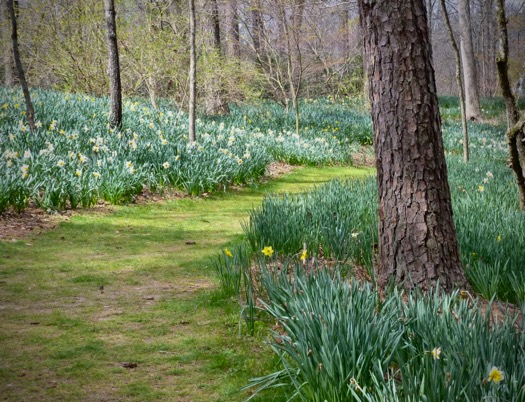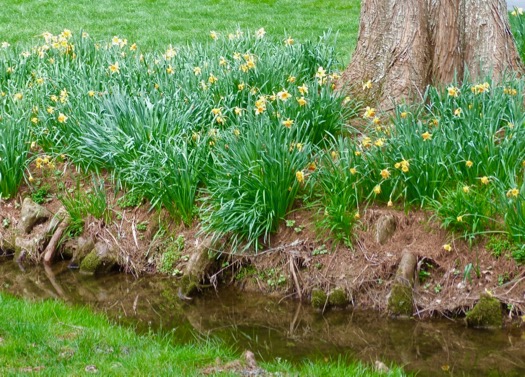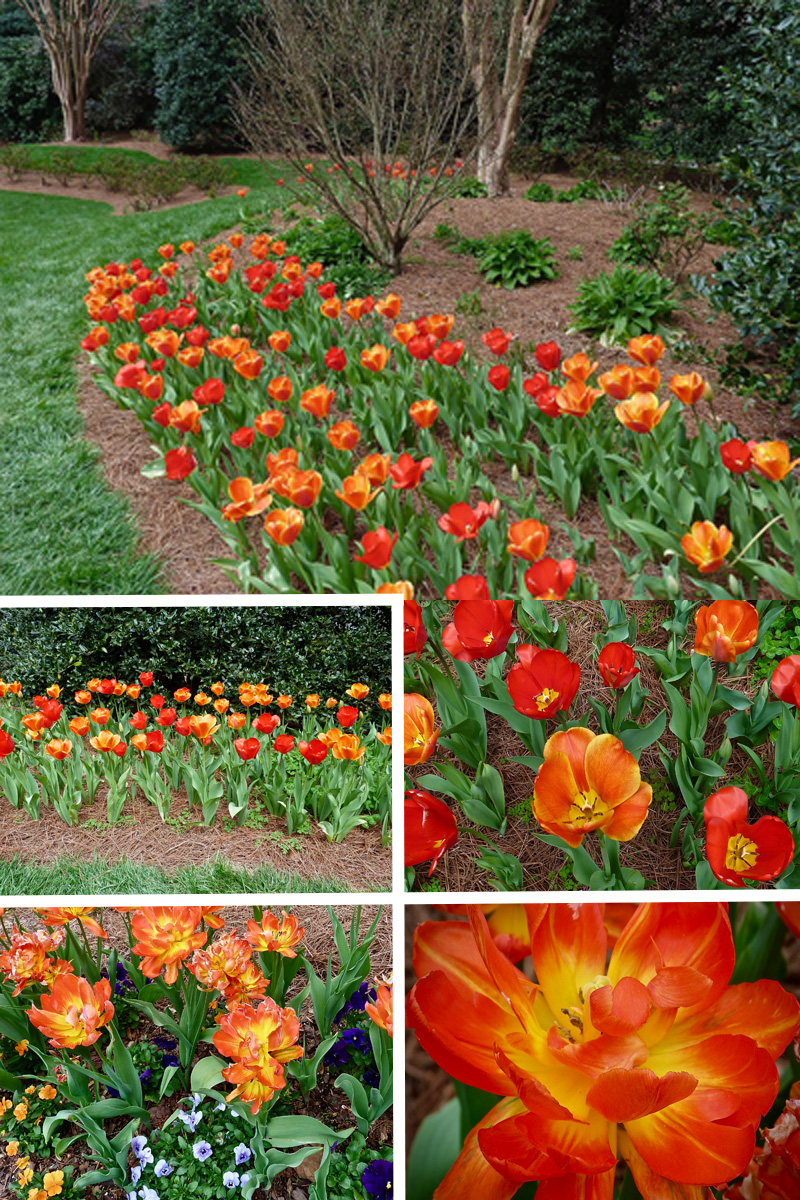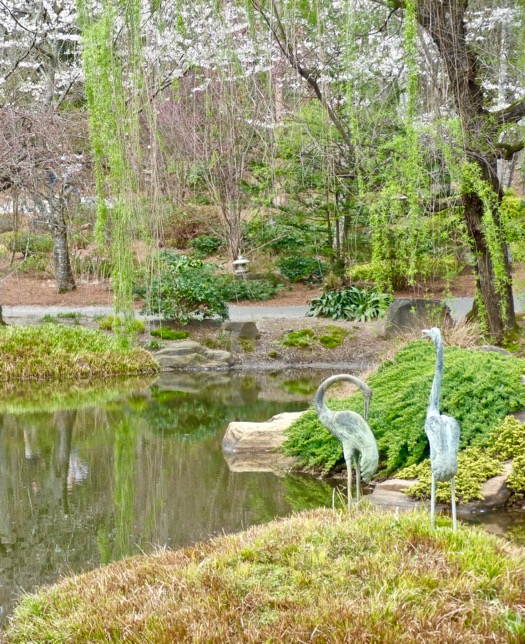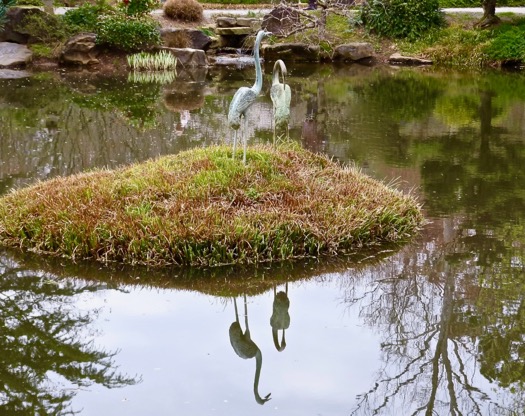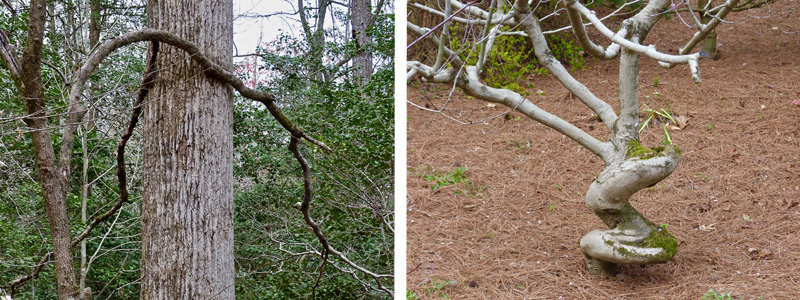Final Garden Project of 2019
 Saturday, December 28, 2019 at 6:00AM
Saturday, December 28, 2019 at 6:00AM I am happy to report that I have completed my final garden project of 2019. It was a lot of heavy work, and nothing brings satisfaction like being able to say "Done!"
This project came to my mind in late October when I looked at a picture of the garden space I had begun in August, 2018. Here is the photo that started it all:
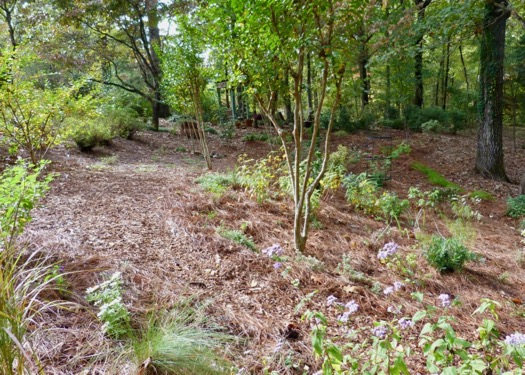
It was at the end of a very hot, prolonged summer drought. Few plants are blooming. What plant wants to bloom in triple digit heat? Some of them are dead! However, the majority did survive the drought, but most in this year-old garden space are still small and have little impact.
Here is the question: Do you see the paths? The planting beds are covered in pine straw, and the paths are mulched with small pine bark nuggets. This photo showed me what my eyes had overlooked. Because pine straw and pine bark mulch are similar colors, the entire area lacked definition. Maybe when the plants matured enough to fill the beds, the issue would disappear. But many of the plants go dormant for winter, so the garden needed something else.
The solution was two-fold: First, I put in some evergreens and other shrubs of various heights, so there will be some winter interest. Variegated gardenia, podocarpus, weigela, and a potted arborvitae were some of the larger specimens I added. Then I outlined my paths with stone. This space covers over 3000 square feet. It was a LOT of rocks. Here is a view of the garden space now that the paths are defined: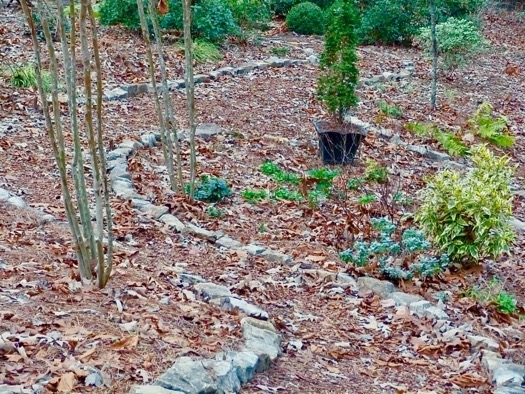
Many of the plants are dormant, and the leaves have fallen from the trees. (I am making progress on raking. The garden has advanced from 'completely buried under a sea of leaves' to 'needs raking badly.') I am looking forward to spring when the plants reappear!
An unexpected bonus: When I was selecting stones from the huge pile I had purchased, I found one that looks exactly like the outline of my home state of Alabama! 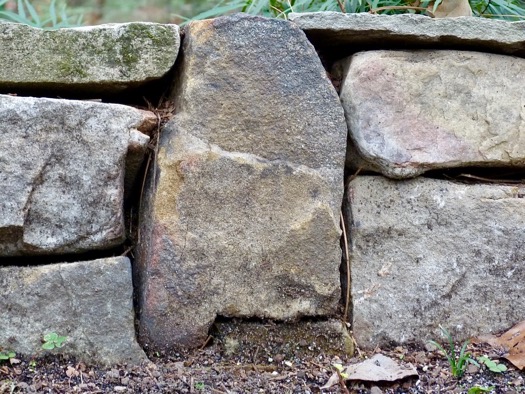
I decided to incorporate the Alabama rock into a low wall in the adjacent arbor garden: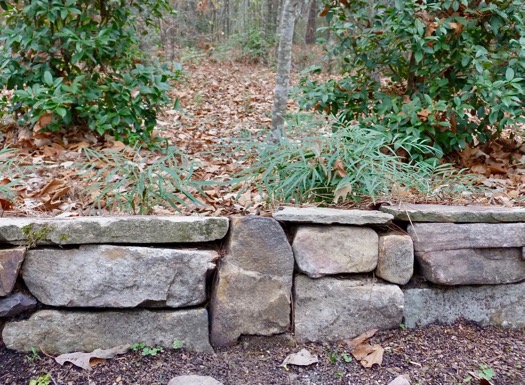
That one rock resulted in a great deal of extra labor for myself, because to make it fit I had to rebuild that entire section of wall, which is about 20' across.
In my rock shopping I also came across an 'Indian rock.' The colorful lichens and its history appealed to me. 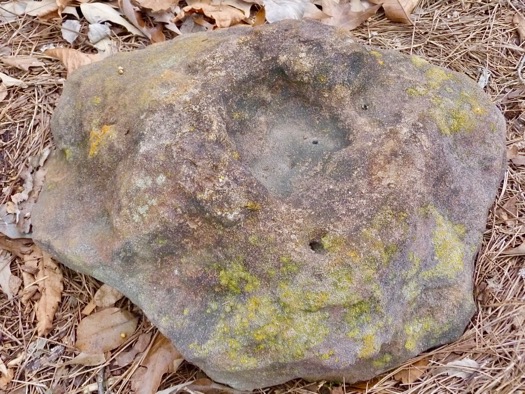 Long ago this large, heavy stone was used by Native Americans in our area for grinding corn or perhaps for making tools or arrows. More recently, it was passed down through the same family for about 75 years. The last owner had a dog who kept hauling his feeding bowl off. (I once had a dog who did this, so I know how frustrating that habit can be.) So the man started feeding his dog in the large depression in the Indian rock. Problem solved!
Long ago this large, heavy stone was used by Native Americans in our area for grinding corn or perhaps for making tools or arrows. More recently, it was passed down through the same family for about 75 years. The last owner had a dog who kept hauling his feeding bowl off. (I once had a dog who did this, so I know how frustrating that habit can be.) So the man started feeding his dog in the large depression in the Indian rock. Problem solved!

